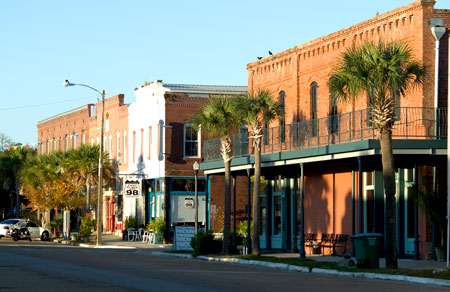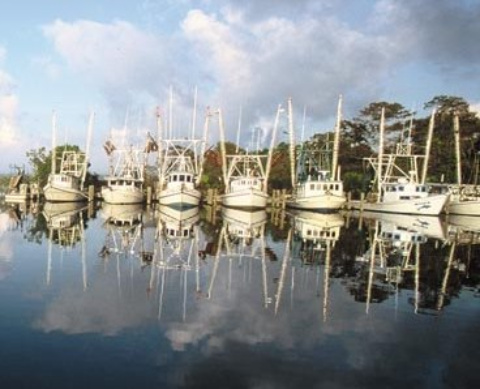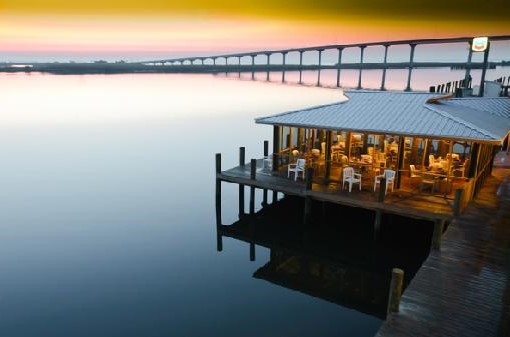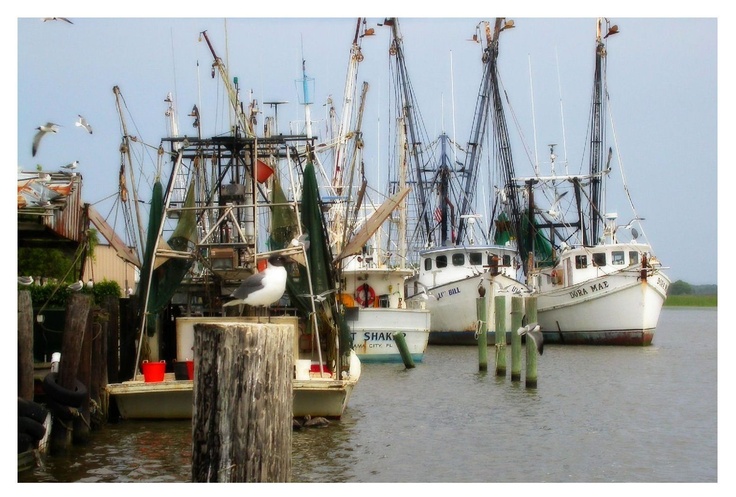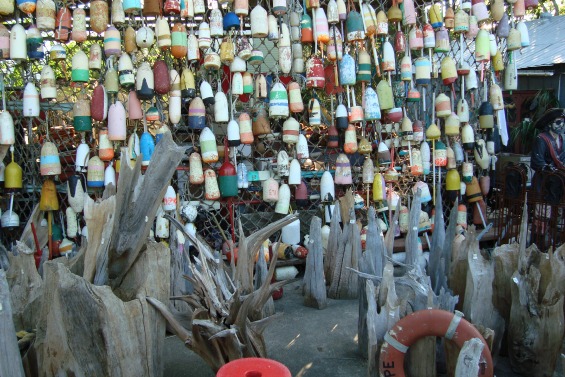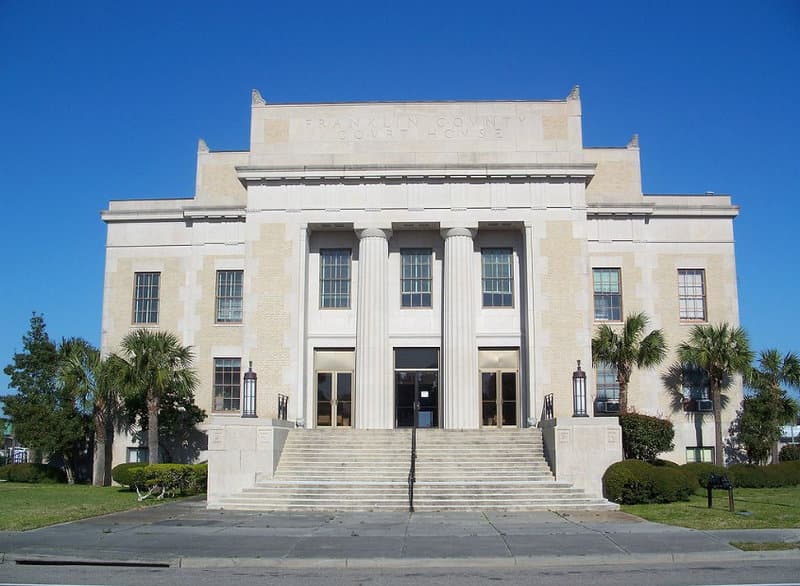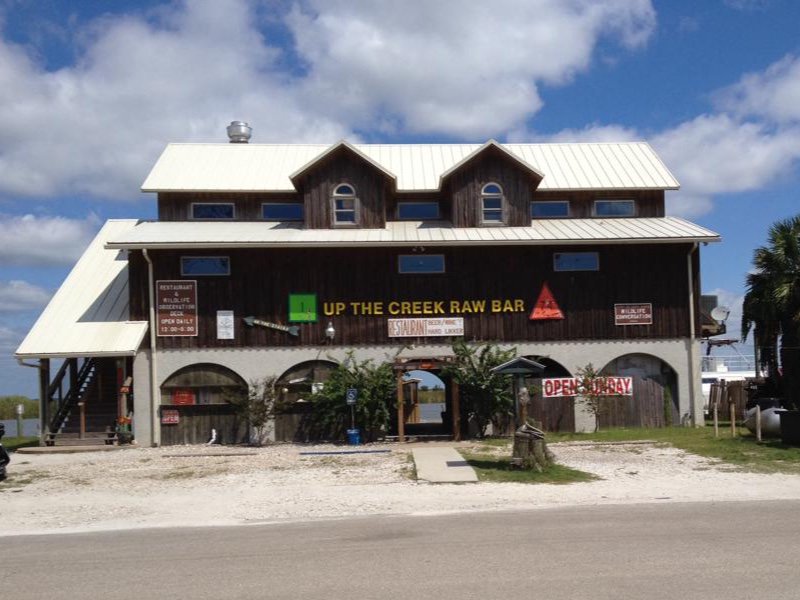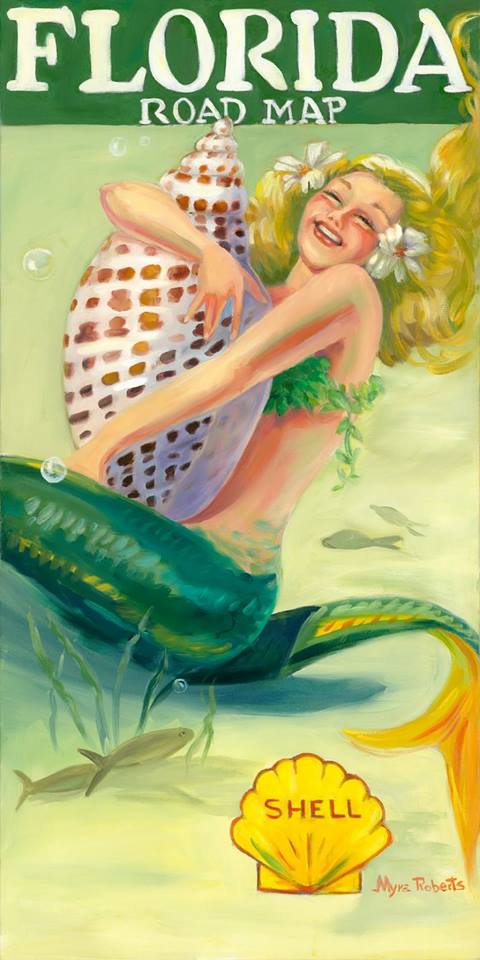- Home
- Florida Towns
- Apalachicola
APALACHICOLA, FLORIDA
By Mike Miller Updated November 2, 2024
Apalachicola, Florida Things To Do, Lodging, Dining, & Real Estate At End Of Article
Apalachicola, Florida is the county seat of Franklin County. The population of this little town is about 2,500, and it is 80 miles southwest of Tallahassee on the Gulf.
It is located at the mouth of the Apalachicola River on Apalachicola Bay.
HISTORY OF APALACHICOLA, FLORIDA
The name Apalachicola comes from the indigenous tribes who inhabited the area thousands of years ago.
The area was first called Cottonton because of a trading post that handled cotton, one of the agricultural staples of the area before the Civil War.
After that, it became known as West Point, and while Florida was still a territory in 1831 the town received its present name.
In the pre-Civil War years before the railroad reached the Gulf states, Apalachicola was the third busiest port on the Gulf, ranking behind only New Orleans and Mobile.
Timber was the largest industry initially as the town grew, with an abundance of pine forests and cypress swamps, and the river was used for transportation of lumber and goods.
The town was in a strategic location during the Civil War and Union forces fought to close off this important southern port, to cut off commerce throughout the South.
After the war, as the town struggled to regain its economy, it was the timber industry that helped bring it back to life. This was aided further as the railroad became established in the early 1900s.
The town grew along with it, although this industry declined as the natural resources began to dwindle.
The seafood industry began in the mid-late 1800s, with what became known as the finest oysters in Florida and its excellent fishing. This is the industry that most shaped the town, and its maritime history and culture have remained throughout time.
In the late 19th and early 20th centuries, Greek immigrants established the sponge trade as a leading industry in town.
This was a shorter-lived industry but quite profitable at the time, as the sponges were shipped out to larger cities across the United States.
APALACHICOLA, FLORIDA TODAY
Apalachicola is today still very much a fishing town, with shrimp being the primary offshore catch.
DEMISE OF APALACHICOLA OYSTER FISHERIES
Until recently, more than 90%
of Florida oysters come from Apalachicola Bay. For many years it's been known as "the oyster capital of the world," and the town hosts the Florida Seafood Festival every year that attracts thousands of seafood lovers.
For several years the oyster fishing industry was dead but is now in the process of coming back.
The Florida Fish and Wildlife Conservation Commission voted to shut down this iconic fishery after years of drought and pollution polluted the wild oyster beds. It lifted the shutdown in 2025.
While wild harvesting was on hold, oyster aquaculture operations continued in the region, providing an alternative source of oysters.
The FWC's moratorium did not apply to these aquaculture activities.
Apalachicola has done a wonderful job of preserving many of its old historic buildings.
Apalachicola Center has more than 900 historic homes and buildings in its extensive Historic District, which is listed in the US National Register of Historic Places.
The City of Apalachicola has a strong sense of place.
Its vibrant history and rich maritime culture are still very much on display with a working waterfront including shrimp and oyster businesses mingling with gift shops and restaurants all serving fresh local seafood in restored historic buildings.
Many of the old houses are beautifully restored antebellum houses, and that southern hospitality and charm is still apparent as you stroll through the town today.
An Apalachicola physician, Dr. John Gorrie, discovered the cold-air process of refrigeration and patented an ice machine in 1850.
He was looking for a way to lower the temperatures of fever patients.
His invention became the basis for modern air conditioning. A replica of his ice machine is on display in the John Gorrie Museum.
Apalachicola is also home to the Dixie Theater that has become one of the artistic centers of Franklin County with community theater performances.
The theater building was built in 1912 and was fully renovated and reopened in 1998.
Today's Apalachicola is one of the few remaining "Old Florida" places in the modern Sunshine State.
The State of Florida has recognized several landmarks of this historic town as Heritage Sites.
APALACHICOLA, FLORIDA HERITAGE SITES
|
|

Photographic Destinations by Bob Kyle
APALACHICOLA HISTORIC SQUARES PROJECT
An example of this city's dedication to its history is the Apalachicola Historic Squares Project.
A volunteer non-profit group (Historic Apalachicola Foundation) is currently spearheading a project to restore Apalachicola's original rectilinear grid of streets and town squares.
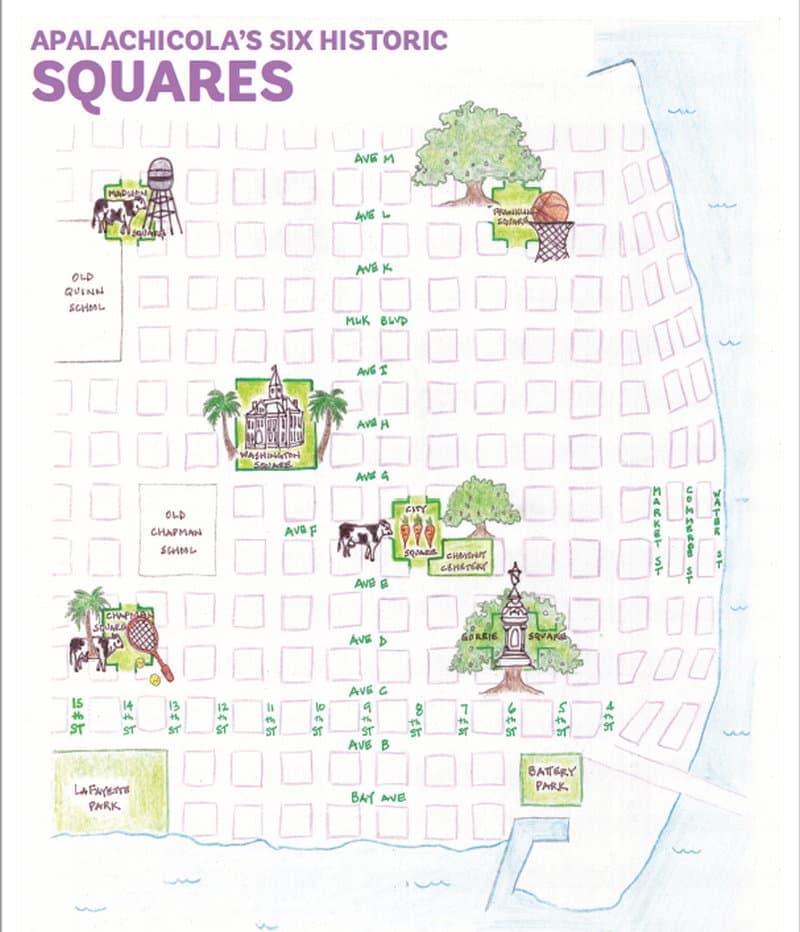
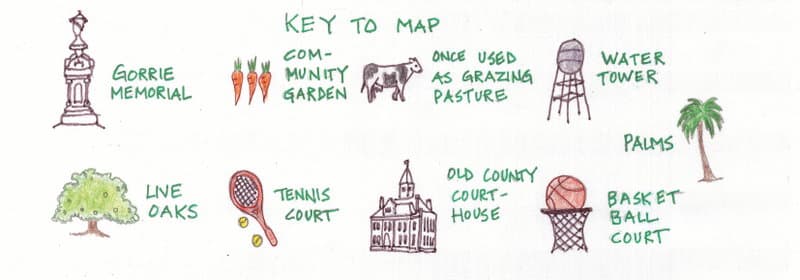
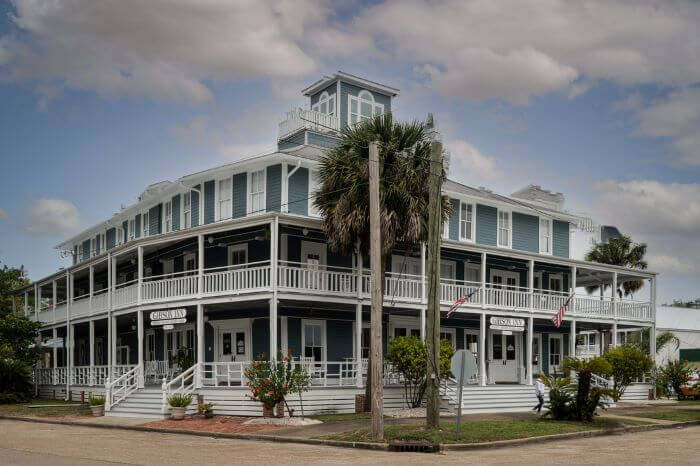
Photographic Destinations by Bob Kyle
While Apalachicola is a small town, it is in the heart of the Forgotten Coast, a 200-mile stretch along the Gulf Coast in the Florida Panhandle that has largely remained natural.
THINGS TO DO IN APALACHICOLA, FLORIDA
Visit the John Gorrie Museum State Park at 46 Sixth St. The museum is a tribute to John Gorrie, a physician who invented an early form of air conditioning in the 19th century, and features exhibits on his life and work.
Take a tour of the historic Chestnut Street Cemetery at 6th St. and Chestnut St. The cemetery dates back to the 19th century and is the final resting place for many of the town's early settlers, including soldiers from the Civil War.
Explore the Apalachicola River Wildlife and Environmental Area, located on US Hwy 98. The area features hiking trails, fishing spots, and beautiful views of the river and its surrounding wildlife.
Visit the Apalachicola Center for History, Culture, and Art at 86 Water St. The center features exhibits on the town's rich history, as well as art exhibitions and cultural events.
Take a boat tour of Apalachicola Bay with Apalachicola Bay Charter Fishing at 1005 US Hwy 98. The tour offers a chance to see dolphins, sea turtles, and other marine life, as well as learn about the town's oyster industry.
Go on a shopping spree in Downtown Apalachicola, located along Market St. The area features a variety of boutique shops selling clothing, jewelry, art, and other unique items.
Visit the Raney House Museum at 128 Market St. The museum is housed in a beautifully restored 19th-century home and features exhibits on the town's history and architecture.
Take a walking tour of the historic district with the Apalachicola Bay Chamber of Commerce at 122 Commerce St. The tour covers the town's historic homes, churches, and landmarks, providing insights into its rich cultural heritage.
Explore the Tate's Hell State Forest, located on US Hwy 98. The forest features hiking trails, camping sites, and scenic drives through its beautiful and diverse landscape.
ALL ABOUT APALACHICOLA, FLORIDA

Florida is the fastest-growing state in the United States and also the fastest-changing. If you see anything in this article that has changed or is in error, please let me know.
Thousands of Florida fans subscribe to our free daily Ezine, Florida Heritage Travel and we have 130,000 followers on Facebook.
By Mike Miller, Copyright 2009-2025
Florida-Back-Roads-Travel.com
Florida Back Roads Travel is not affiliated with or endorsed by Backroads, a California-based tour operator which arranges and conducts travel programs throughout the world.
